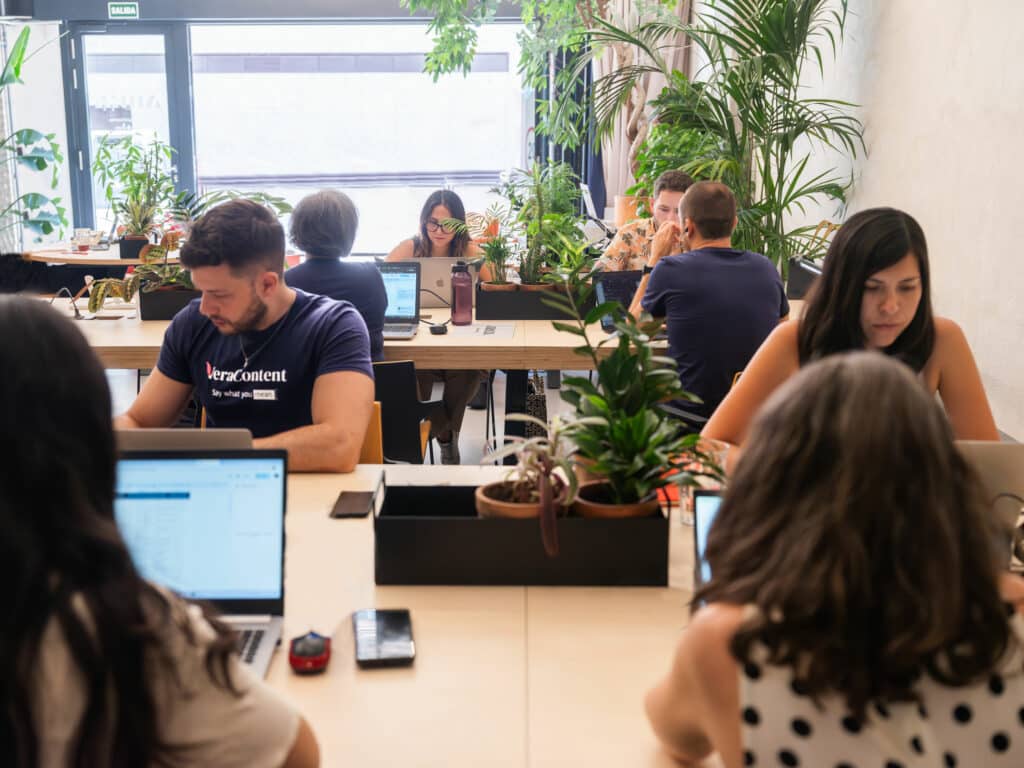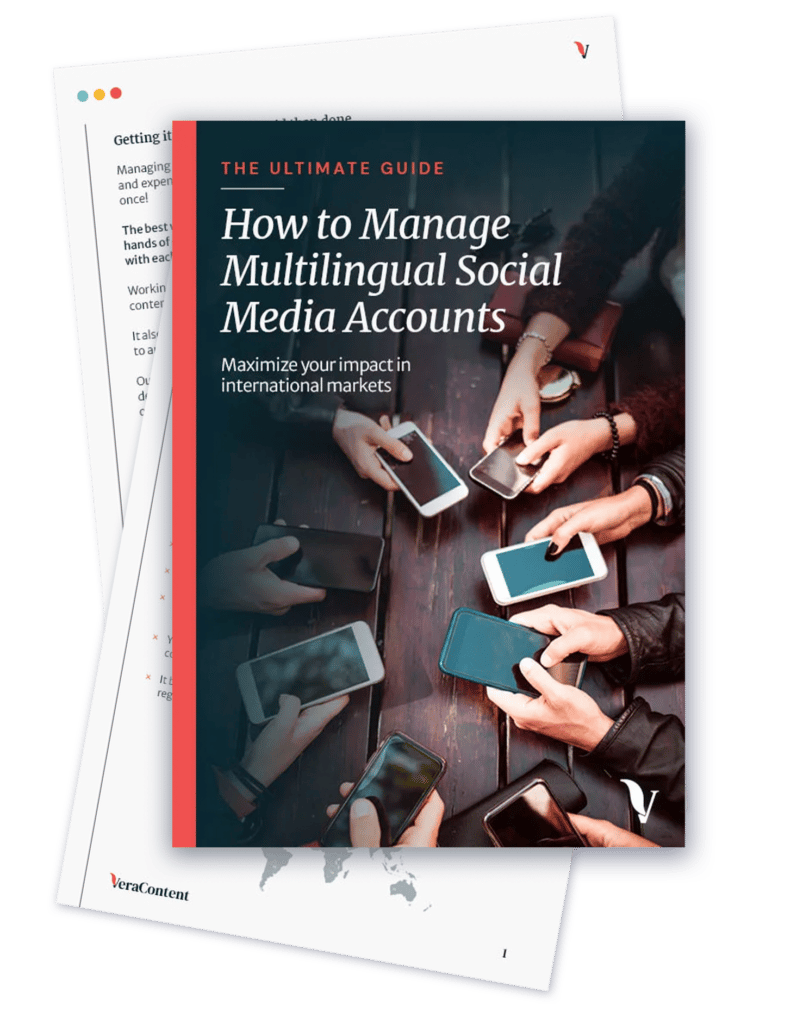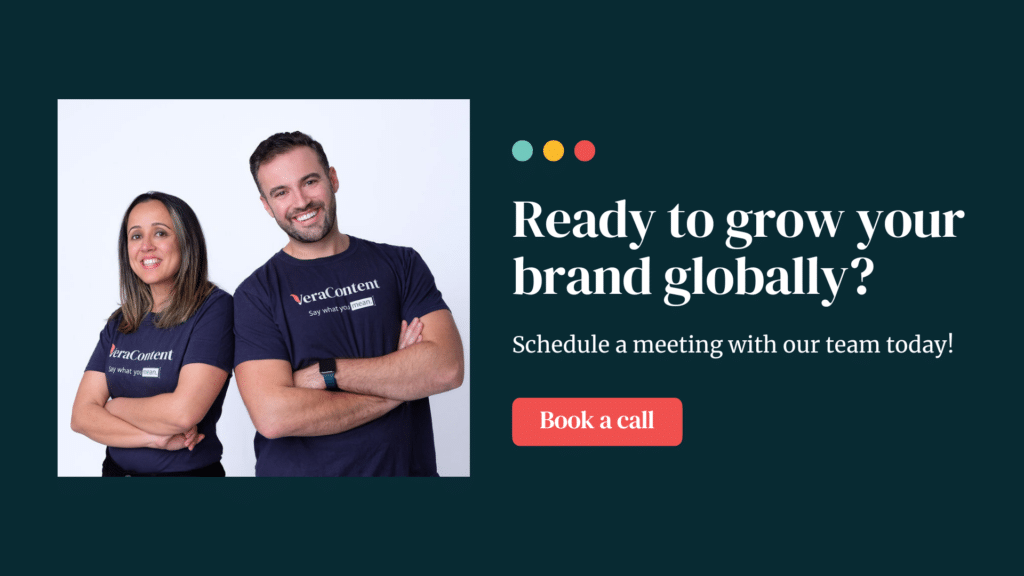Hyperlocal social media marketing targets consumers from a specific location. This type of marketing strategy is usually reserved for businesses with a physical location, like a store.
But what if you do business worldwide? Is there still a benefit to going hyperlocal on a particular market?
Keep reading for a few advantages of hyperlocal social media and how to get the maximum effect when going this route.
Here’s our recap:
What is a hyperlocal social media strategy?
Hyperlocal social media marketing zeroes in on local audiences. This approach targets those actively seeking products or services similar to yours within a very specific local area—think neighborhoods or even streets. The goal is to increase foot traffic and sales by engaging with ready-to-purchase customers in your immediate vicinity, all without draining your time or budget.
Crafting content and messages that are uniquely suited to the interests and needs of the local audience, hyperlocal social media marketing aims to connect with people at the perfect moment. This approach includes sharing information about local events, landmarks, and businesses or highlighting products or services unique to the area.
See also: How to design a global social media strategy that gets results
When does it make sense to go hyperlocal on a market?
Any brick-and-mortar business can leverage hyperlocal marketing—whether it’s a restaurant, hotel, retail shop, grocery store, real estate agency or beauty salon. In this case, it’s commonly used in SEO marketing to target people using the “business near me” hyperlocal search. But it can also be used on social media—focusing on location-specific organic content and location targeting in paid social media ads.
Another time it can make sense to go hyperlocal is when a brand’s target market is primarily concentrated in a specific locality. For example, if your target market is college students, it makes sense to target popular university districts.
Additionally, a hyperlocal approach becomes relevant if there are distinct regional preferences, cultural nuances or significant variations in consumer behavior that impact purchasing decisions. For example, take a global restaurant chain. A branch in an artsy neighborhood could adopt a hyperlocal approach by featuring local artists’ work on its walls and organizing art-themed events.
Brands can always benefit from adopting a hyperlocal strategy whenever there is an opportunity for active community engagement, local event participation, collaborations and sponsorships.
Ultimately, the decision to go hyperlocal should align with your brand’s goals, the nature of your products or services, and the potential for meaningful connections within a specific market.
See also: How to create a solid multilingual social media strategy
What are the benefits of a hyperlocal social media marketing strategy?

Focusing on the local scene can significantly boost engagement with a highly specific audience. The more local you go, the higher the likelihood of connecting with that distinct community.
One of the key benefits lies in creating a deeper sense of community and connection. By showcasing local landmarks, businesses, events, news and attractions, a brand can weave trust and forge a strong bond with the community. This helps to build relationships with local residents and opens doors for partnerships with other businesses in the area—potentially sparking collaborations that amplify collective success.
The targeted nature of hyperlocal marketing also translates into increased engagement and interaction. Tailoring content to the interests and needs of the local audience ensures that businesses attract customers who are genuinely interested in their products or services. This precision leads to higher conversion rates, as the audience is already predisposed to and receptive to your messaging.
Another noteworthy advantage of hyperlocal marketing is its potential to lower advertising costs. Implementing a strategy that involves precise audience targeting, local hashtags and geotags, building a referral network, and using user-generated content can significantly reduce advertising expenditures.
However, a hyperlocal approach becomes costly when you want to do it across many markets. In this case, it’s best to pick and choose select markets to focus on rather than spreading yourself too thin on multiple hyperlocal strategies.
Strategies that maximize the effect of hyperlocal marketing

Benefitting from the full potential of hyperlocal social media marketing requires a strategic approach. Here are a few strategies to maximize the impact of going super local.
Identify the right target audience and understand their interests
Not all hyperlocal audiences are lucrative for every type of business. When identifying specific audiences to target, make sure they have the potential to bring in a decent amount of revenue.
For example, it makes sense for a cafe to target people who live or work in its vicinity, but does it make sense for the hotel next door to target that same audience? Probably not—as the hotel’s audience is scattered around the world at their point of purchase.
Once you’ve identified the right hyperlocal audience, you need to understand their needs. Conduct thorough research to identify your target audience’s demographics, preferences and behaviors. This insight forms the foundation for crafting content that resonates with their specific interests.
See also: International audience research methods: How to reach new markets
Create content tailored to the local audience
Tailoring content is key to capturing the attention of the local audience. Craft messages that reflect the local culture, address specific needs and highlight your business’s relevance to the community. This personalized touch enhances engagement and fosters a stronger connection.
For example, when we worked with phone accessories brand PopSockets on a hyperlocal strategy aimed at people in Berlin, we created content about things to do in the city, cafes to visit and other local trends.
Below is an example of a TikTok post focused on a festival in Berlin:
@popsockets_europe #lollapalooza2023 ♬ I wanna party – ★
Use local hashtags and geotags
You can boost your visibility by incorporating local hashtags and geotags into your social media content.
This practice ensures your posts are discoverable to individuals searching for content related to your area. It enhances your reach within the local community and aligns your brand with local conversations.
See below another example from PopSockets with the hashtag #berlinsummer:
@popsockets_europe #berlinsummer ♬ Indian Summer – HOAX
Partner with local influencers and businesses
Local influencers can serve as powerful brand advocates, introducing your products or services to a wider audience. These partnerships provide access to established local networks, lending credibility to your brand.
You can also create and share content that promotes local businesses in your region. For example, a restaurant can highlight the farms from which it gets its local produce. Doing so has a massive influence on attracting local audiences as, according to YouGov, 60% of consumers worldwide prefer buying food from their own country. This increases to as much as 74% of consumers in Italy, 71% in Sweden and 67% in France and Spain.
The preference for locally produced products has grown across the board in recent years, with a hyperlocal focus having an even greater impact. Tell your local audiences about your efforts in keeping it local—they’ll love you for it!
Participate in local events
Whether it’s industry conferences, charity runs, art festivals, annual fairs or community engagement activities, local events offer a platform to amplify your brand’s presence in local communities.
Choose events that align with your brand and resonate with your target audience. For example, a health-focused store might participate in a local charity run promoting wellness.
Take advantage of your sponsorship by getting the event to highlight your brand as much as possible. Share behind-the-scenes glimpses and promote any special promotions or competitions around the event. This content is valuable for your social media channels, reinforcing your brand’s local involvement.
Part of PopSocket’s hyperlocal strategies in London and Berlin was partnering with local festivals, including Cloud X in London and Lollapalooza in Berlin.

Examples of hyperlocal social media content
Here are examples for different types of businesses and the kinds of hyperlocal social media posts they might create:
- Local restaurants:
- Posts: Daily specials with photos of dishes, behind-the-scenes videos of the kitchen and customer testimonials. They can also post about local ingredient sourcing to appeal to community-conscious patrons.
- Events: Announcements for live music nights, cooking classes or tasting events that encourage local engagement.
- Real estate agencies:
- Posts: Property showcases with virtual tours, client success stories and tips for home buyers and sellers in the local area.
- Community focus: Updates on local market trends, infographics on property values in different neighborhoods and features of community events or developments.
- Fitness centers:
- Posts: Member spotlight stories, workout tips and clips from fitness classes showcasing the community and environment.
- Challenges: Posts about fitness challenges or local outdoor fitness events, encouraging community participation and building local partnerships.
- Boutiques and local retailers:
- Posts: New arrivals with high-quality images, staff picks and customer reviews highlighting personal shopping experiences.
- Promotions: Flash sales or discounts exclusive to followers and posts about local collaborations with other businesses.
Is a hyperlocal social media strategy suitable for your brand?
Hyperlocal social media marketing strategies can be a game-changer for brands looking to build meaningful local communities. While most suitable for brands with a physical presence, there are occasions when global brands can zone into hyperlocal audiences. But they need to be extremely strategic about doing so.
We’d love to hear from you if you’re considering a hyperlocal approach to your global social media strategy. Let’s discuss your options, weigh the pros and cons and develop the ultimate social media strategy for your brand. Get in touch to see if you qualify for a free content consultation.
Download our ultimate guide to managing multilingual social media platforms:



